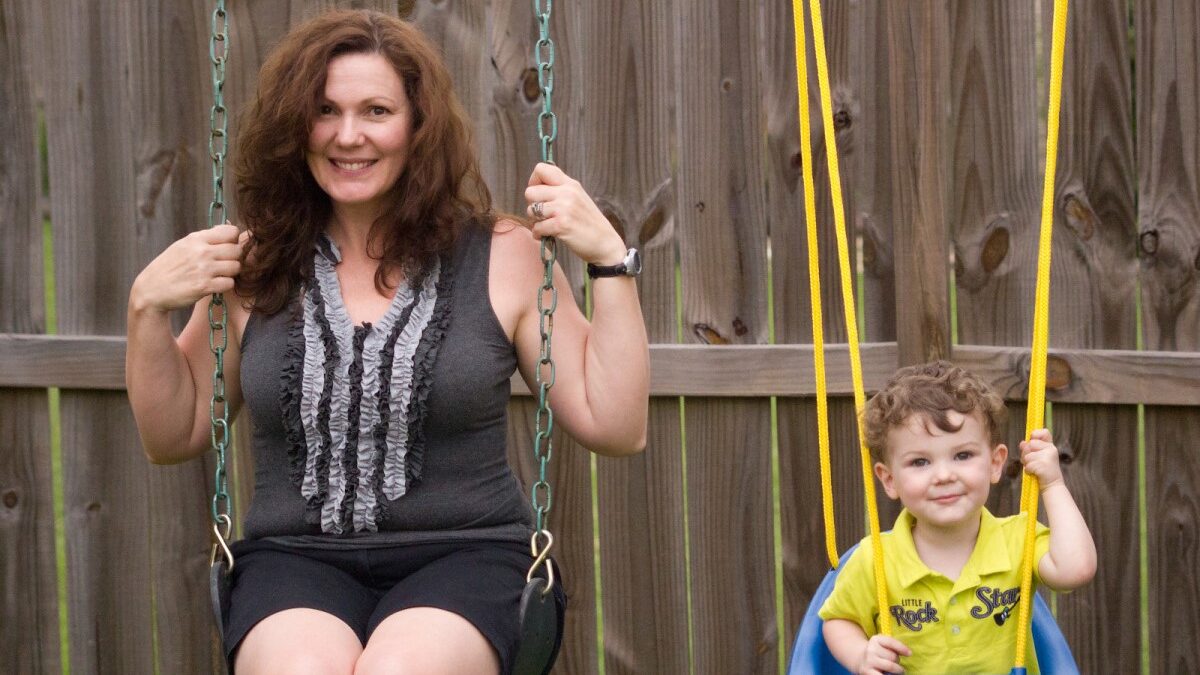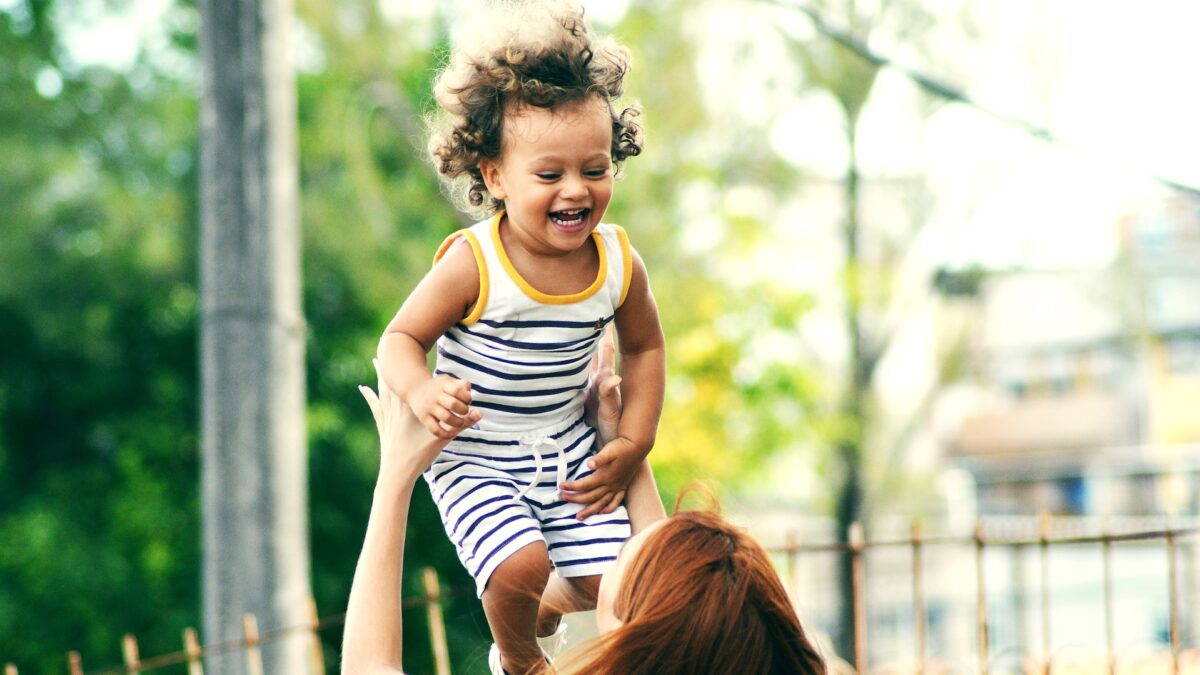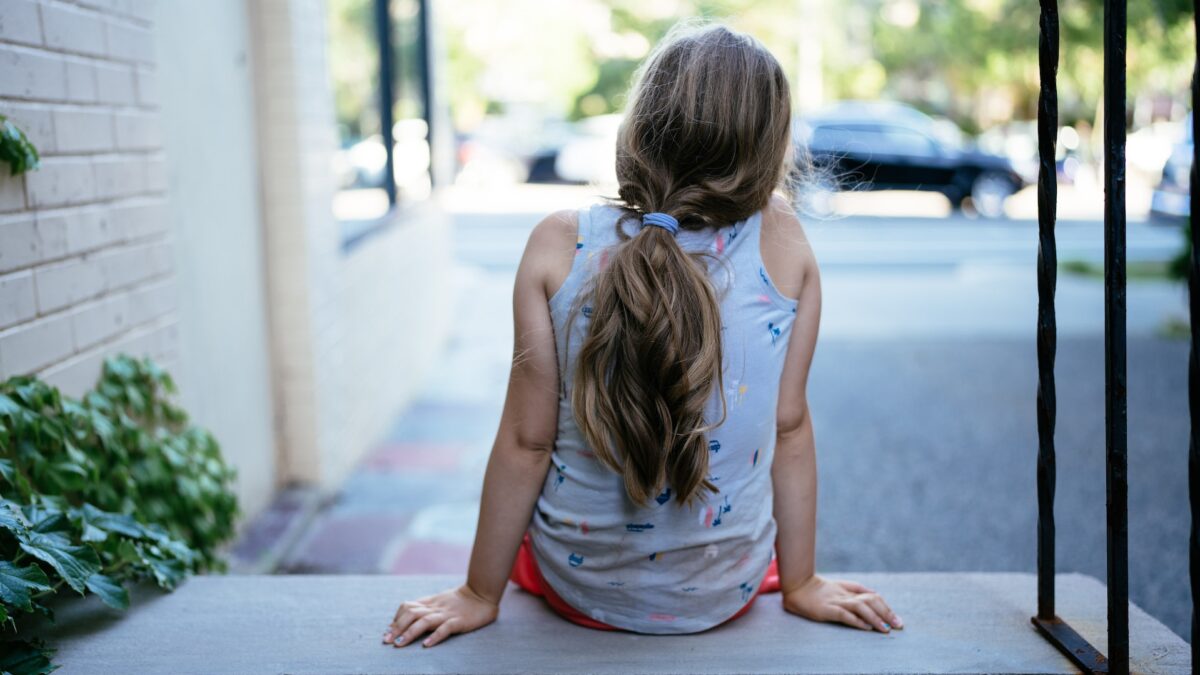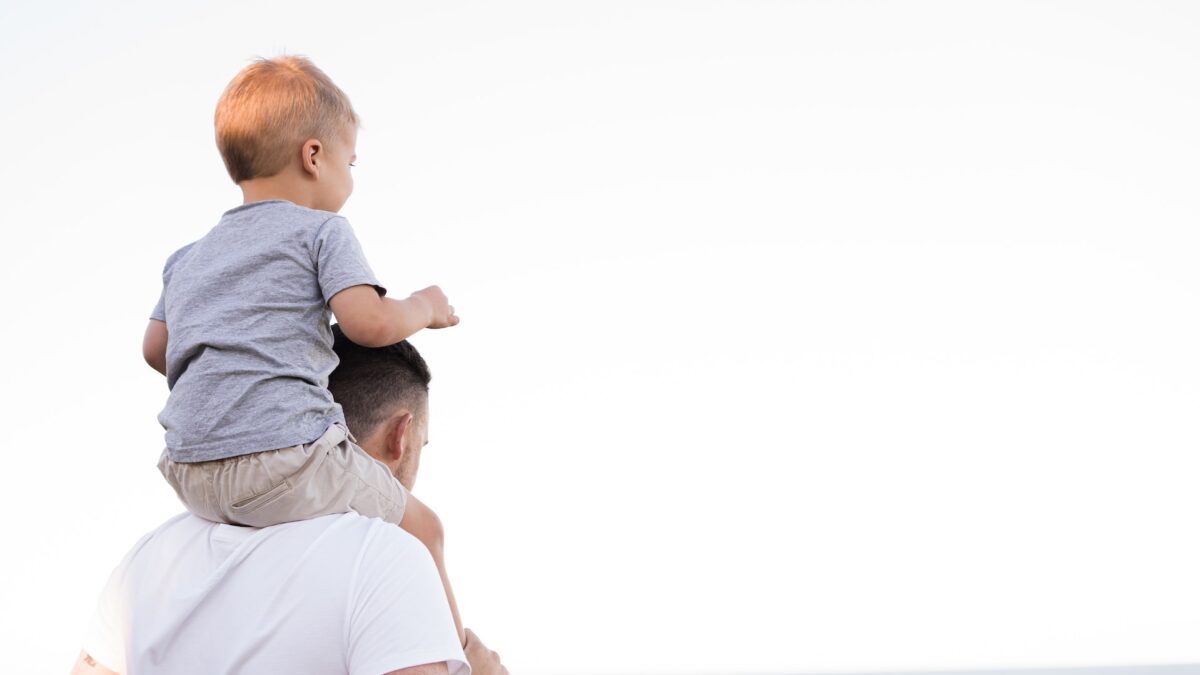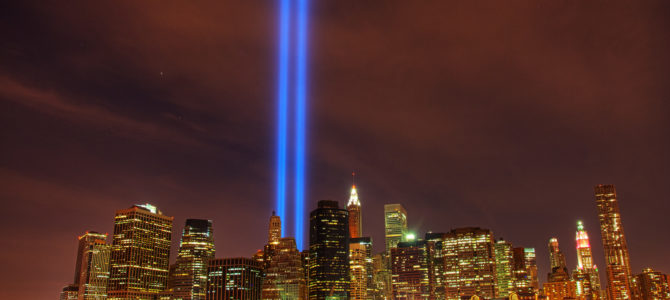
It happens every year around this time. I emerge from the subway, leave a play, or walk out into my backyard, and there it is again: Two piercing blue lights racing razor-straight into the dark skies. It’s jarring, in a somber and soft kind of way, I can feel it in my whole body.
A few years ago, something new happened when I saw that ghostly tribute to the Twin Towers. My son asked, “Dad, what’s that?”
The terrorist attacks of September 11, 2001 that killed nearly 3,000 people in New York alone are not easy to talk to young kids about. Along with the sadness of so much death, there is introducing a kind of evil that would kill thousands of innocents out of depthless hatred. For kids, especially kids in New York City, comes the fear of it happening again.
When the time came to tell our son, my wife stumbled upon a remarkable resource. In 2002, Maira Kalman wrote and created the art for an extraordinary children’s book called “Fireboat: The Heroic Adventures of the John J. Harvey.” The beautifully illustrated book tells the story of a decommissioned fireboat bought and restored by some friends for fun. On 9/11, the boat not only helped ferry people from lower Manhattan, it was pressed into its original service and once again put out fires.
The book’s focus on positive action while not being shy about what really happened that day makes it a great introduction to the tragic events. The power and magnitude of the destruction come through particularly in two double full-page gouache illustrations. The first is a simple blue sky, with two plain dark planes moving toward the gleaming towers.
The next is an enormous explosion done with broad brush strokes in gray and black, with flashes of red. The words below read, “The sky was filled with fire and smoke. The buildings exploded and fell down to the ground. Many people were hurt. Many lives were lost.”
As my son grew a little older, the questions became more complicated. Why did the terrorists hate us so much? Did you know anyone who died? Was everyone really sad? I find myself wondering whether I should share the emotional impact 9/11 had on the only city he’s ever lived in, and on America as a whole. Is it wise or even possible to express that level of trauma to a child?
Images are burned into the minds of those in New York City on 9/11 and the weeks and months after. Entire walls in subway stations filled with hundreds of photocopied photographs placed by loved ones desperately seeking information. I remember one face in particular. It was a young Asian man wearing a Phillies cap. That’s my favorite team. I never met him, but I can still see his face.
Over time, it became clear hope was lost of finding them, but the photographs remained. They stayed up in many cases for weeks. They took on a new purpose. The city had collectively decided they were works of art, monuments to our grief. As the city slowly went back to something like normal, it did so under the victims’ gaze.
These are the kinds of stories that I tell my son, but I also tell happier stories. It is almost impossible for any event to saturate New York City. When the Super Bowl was in town, outside of Times Square, you would basically have had no idea. September 11, 2001 was the first time I ever saw anything saturate New York City. It was part of everything, from Yankees games to theater to local news — just everything.
The only other time I ever saw it was almost two years later. On August 14, 2003, New York City experienced a massive blackout. The afternoon it happened, almost everyone had the same initial reaction: “Is this another attack?” As night drew closer, it had become clear it wasn’t. In the strange natural twilight of city streets, something amazing happened.
Bars and restaurants started filling up, many of the latter offering blackout specials before their refrigerated food expired. Friends met up to party — after all, there would be no work the next day. In our building of 72 units on the Lower East Side, everyone went to the big deck on the roof, with food and booze. We listened to transistor radios and enjoyed the night.
We looked out at the skyline as full darkness finally fell. All of the towers disappeared, and there were only a few red lights from hospitals with generators. The city was shrouded. In that moment, the city finally exhaled for the first time since the tragedy. In some sense, 9/11 was finally behind NYC.
The blackout is part of the story I tell my son about the towers because it is a story of healing. As all lives do, his will eventually know the terrors of death and sorrow, and I want him to know that terror never lasts, and terror never wins, especially not in his city.
There are more stories, stories of heroes who sacrificed their lives that others might live. There were firefighters, police, and more who rushed in because they knew their duty and loved their fellow man. There are stories of a mayor and a president who lent their strength to the people and drew strength from them. These are universal stories that our boys and girls need to hear. They are songs as old as man.
My wife and I make a great effort to ensure that our son feels ownership and a mastery of New York City. Mastery of the city comes with rewards: command over almost limitless resources, the ability to go anywhere in the world and never feel overwhelmed by the size or scale of anything except perhaps the wilderness. But being a New Yorker comes with something else: a target on one’s back.
Our kids see the soldiers with machine guns in our train stations, the bag checks. They learn to say something if they see something, and they see the memorial lights. That day is woven into the city where they are growing and learning. That’s why we have to tell the story: To let them know that these are not empty gestures or slogans, they are needed measures for people living under the ever-present threat of terror, yet leading joyful lives in spite of it.
Last week, that first night when the lights appeared again, I came in from out back to get my son. He was preparing for his new bedtime routine, the school year having just started. I interrupted. I took him outside to sit on the back steps and showed him. We talked about it for a while, again. Just before returning to his room he turned to me and said, “It’s beautiful.” I looked at the lights again, then at him, and I told him he was right.


